When you consider how you share what you create, how do you avoid a feeling of overwhelm? This is a constant concern that writers and creators tell me about. Last week I presented the latest version of my Substack workshop, helping writers embrace the platform, grow their subscribers on it, and earn money in the process. (You can purchase access to the full recording here.) I had way more people than I expected sign up, and the feedback has been incredible.
One concern kept coming up again and again from writers: fear of doing one more thing to share what they create. Having to learn — YET ANOTHER — new platform from scratch. The fear of both jumping on a trend, and also being too late to benefit from that trend because they waited too long.
In recent weeks, I have also run private sessions about Substack for Jennie Nash and Author Accelerator, Brooke Warner and She Writes Press, and Jane Friedman and her amazing community. (If you want me to speak with your community about Substack, let me know!) There too, writers asked great questions about what it means to manage the process of creating and sharing, without feeling overwhelmed.
Today I want to share my recommendations for how to do three things:
- Making writing and creating central to your life.
- Feeling great about sharing your work.
- Not feeling overwhelmed in the process.
Let’s dig in…
Do Less
Yep. Just… do less. I talk to writers about this all the time. Instead of doing 1,000 things around a book launch, what if you just did three things really well? How could that not only increase effectiveness, but also just feel better?
I wrote about this recently in terms of social media, how doing less can be a powerful way to find greater fulfillment and connection in social media.
Too often, we seek to add new things to our life with the hopes they are the missing ingredient. But I try to flip my thinking on this: what if we did less. How could that help me create and share more?
I remember people asking a fitness expert on a podcast once, “What vitamins and supplements do you take?” The hope was that the expert would tell them what supplements to buy, and to add to their health routine. But the expert said something unexpected: “I take as few supplements as possible, and those I do take, are totally customized to my personal health needs.”
The message was this: do less. Instead of adding supplements, just try to eat food that is rich in vitamins and things you need. If you do that, then you may not need to “supplement” your food with added pills and expense and management of them. Less is indeed more.
Now, I’m not a fitness expert, but my entire life has been spent in the creative process and surrounded by those who write and create. If you are a writer looking to prepare for a book launch a year ahead of time, and a goal is to get 40 book reviews within the first month of publication… what if instead of trying to get 10,000 faceless followers on social media, you instead developed an email list of 100 dedicated fans. And over the year, you encouraged and prepared them to post book reviews when your book came out. Even if only 1/2 did it, you still exceeded your goal. 100 people vs 10,000 can have the same result. In other words: Do less, have it be more effective, and feel better about it.
Pursue Human-Centered Marketing
I’ve used this phrase for years to try to describe how to think about sharing your work: this is marketing focused on a meaningful connection between two people. That’s it. It’s not about how many followers you have, how many likes you get, gaming an algorithm, or trying to find secret buttons in social media that makes everything easy. While those things may be a part of tactics you use, they are not the goal.
This is about connecting with people in a meaningful manner. It is about communicating effectively, and building trust with others. It is about empathy and evoking a feeling of possibility.
We often focus too much on the technology. I was considering one example this week. Recently Apple presented one of their keynote presentations where they unveiled new products. After the video was released, they gave a big reveal: the entire presentation was shot exclusively using an iPhone.
So the big message is meant to be: “Look what an iPhone can do!” But then, Apple released a short behind the scenes video of how their presentation was shot. And what you see is this: the iPhone is the absolute tiniest part of the entire production. So here is the rig that encapsulated the iPhone:
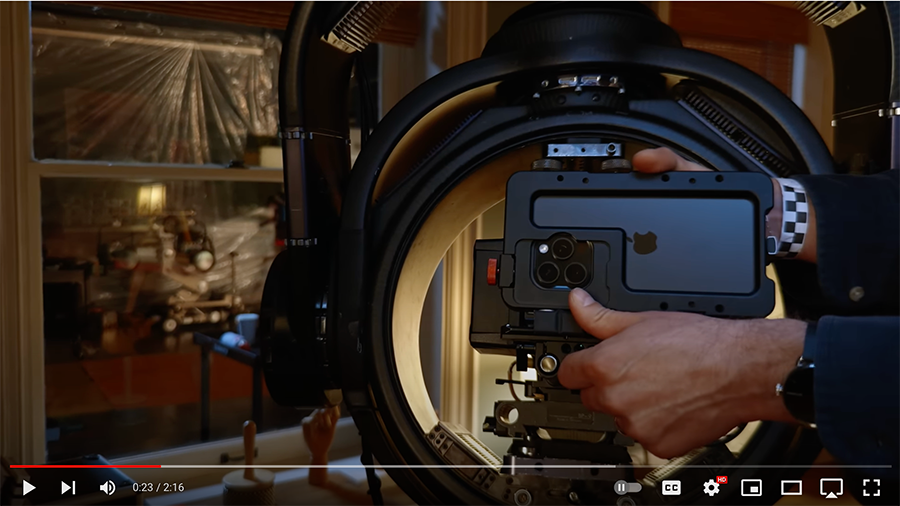
But then you see in the video is so much else, specifically: People, people, people! The video is filled with so many people behind the scenes — each an expert with years of experience in their craft. There are 12-20 people behind the equipment during this one shot:
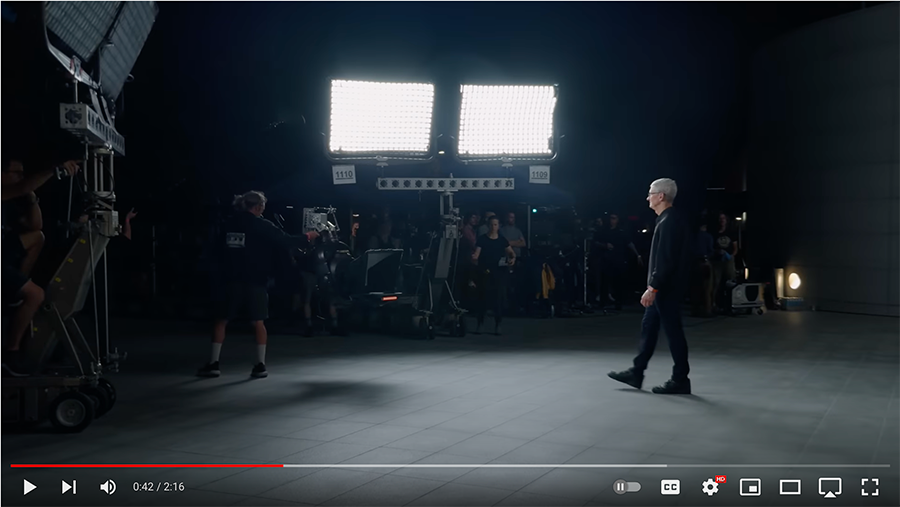
Yes, there is a lot of technology being used: the expensive lights, the huge rigs, the many external hard drives, the spaghetti of complicated cabling, the 15 monitors, the many editing programs. But each of these items requires experts who know what to use, why, and how.
What you don’t see is important too: all of the scriptwriting, the voice/presentation coaches, set designers and wardrobe experts, the storyboarding, and so much else that is essential for effective communication. My favorite image from the behind-the-scenes video is this guy running as he pushes the camera to get a shot, with a crescent wrench hanging out of his back pocket. No matter how fancy the tech gets, you always need that guy running and pushing with a crescent wrench in his pocket!
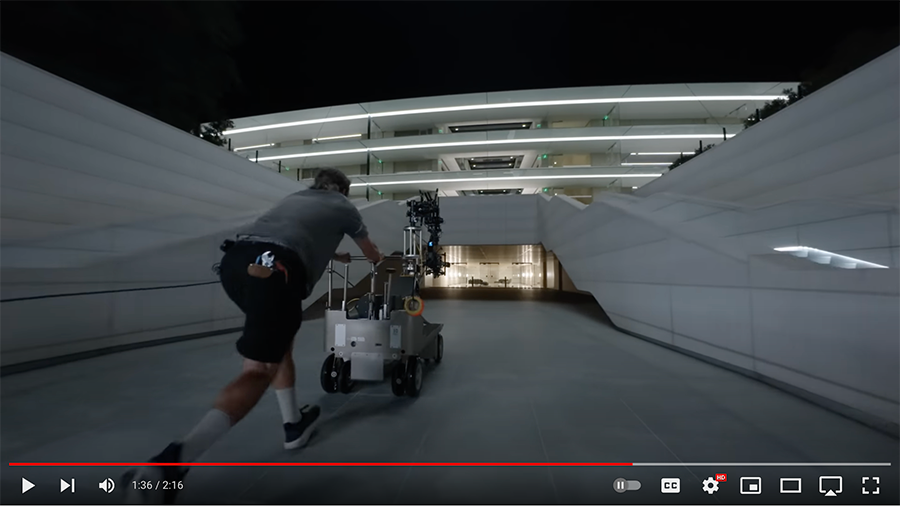
This is not about the technology, even though it is a part of the process. Technology will change, but your ability to communicate effectively with others around what you create, and developing a sense of trust in the process is a skill that will never change.
I recently watched the newest Mission: Impossible movie, and of course my favorite scene was the one where the government was converting all of their digital intelligence back to paper, using a warehouse full of typewriters! They are going analog when an AI begins modifying digital files:
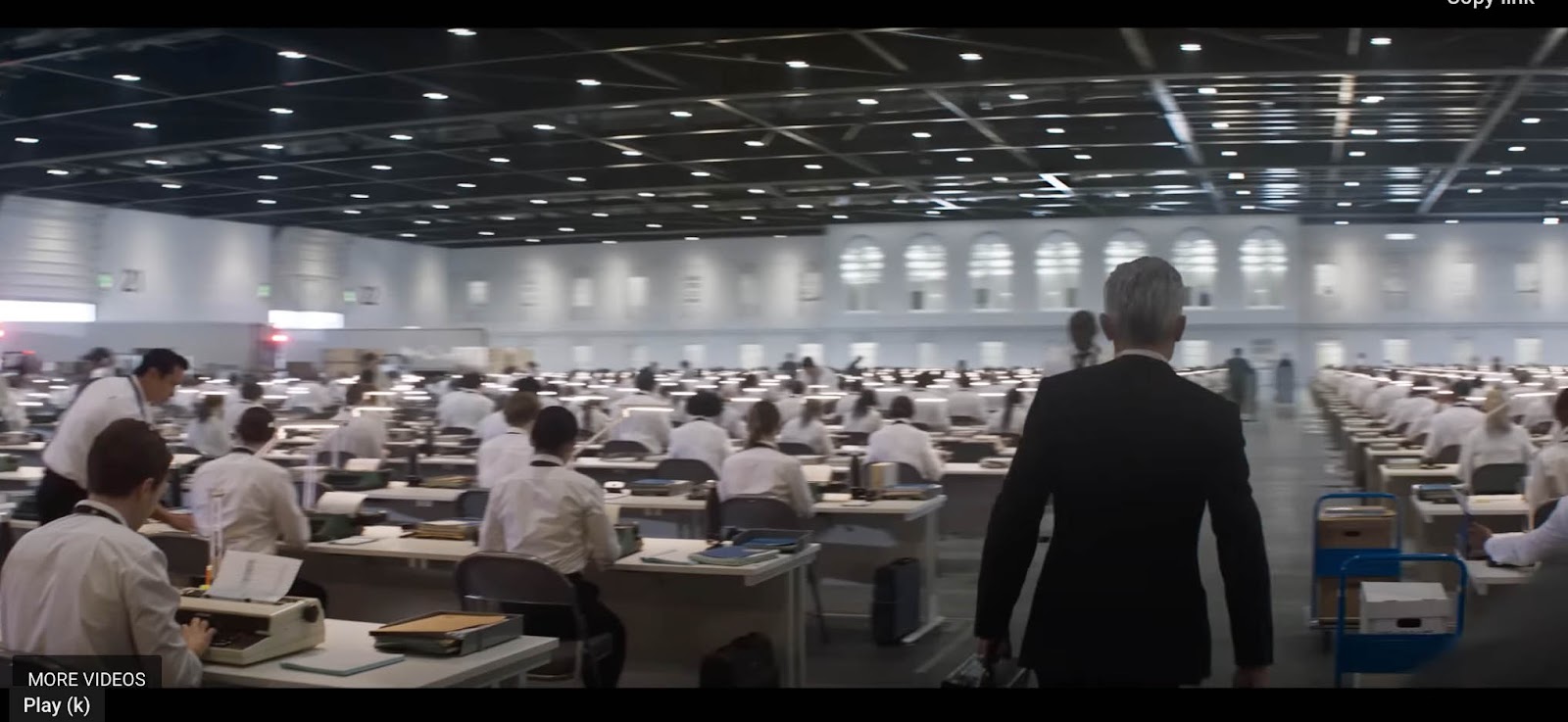
I mean, I am ready for this kind of catastrophe! Here I am with part of my typewriter collection:
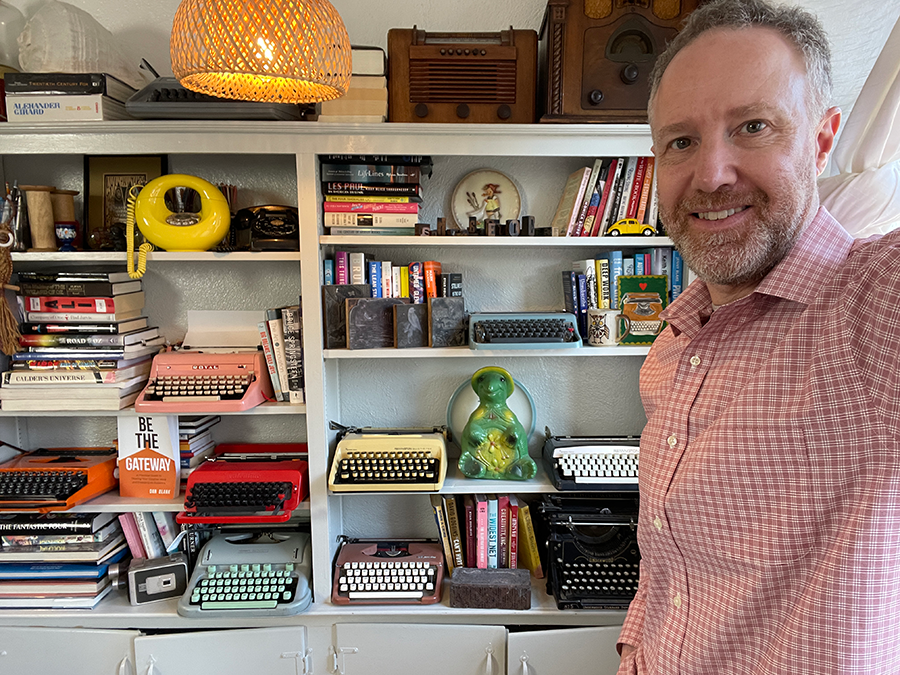
I keep vintage technology around to remind me: the tools change, but they are always in the service of connecting stories and ideas to people who will be inspired by them.
Hone Your Creative Process
Want to feel less overwhelmed when sharing? Focus on developing the skills of communication, coordination, and collaboration. This, as opposed to: the tech, the buttons, or the trends. I wrote a long essay about this recently: Believe in your unique creative voice.
Too many people are afraid to create. I want to challenge you to create more. To make your creative process a part of your everyday life. I see this all the time at home.
My wife is an amazing artist, and art is central to her life. She has carved out dedicated spaces for her art in our house, including an art table that is constantly changing to reflect her latest project. It is a lens into her creative vision. Just this week it was cleared off, and a specific array of the following items were carefully laid out:
- 10 tubes of paint
- 2 kinds of erasers
- 6 kinds of pencils
- A roll of tape
- A bottle for water to clean her brushes
- A stack of 10 pastels
- A jar of ink
- 3 watercolors
- A notebook
- Blotter paper
- A few other objects I’m not sure what they are
- A small wooden box that I’m not sure what is in it
All of these supplies were selected for a very specific painting. A few days ago, her desk looked completely different, with completely different supplies on it for a different project.
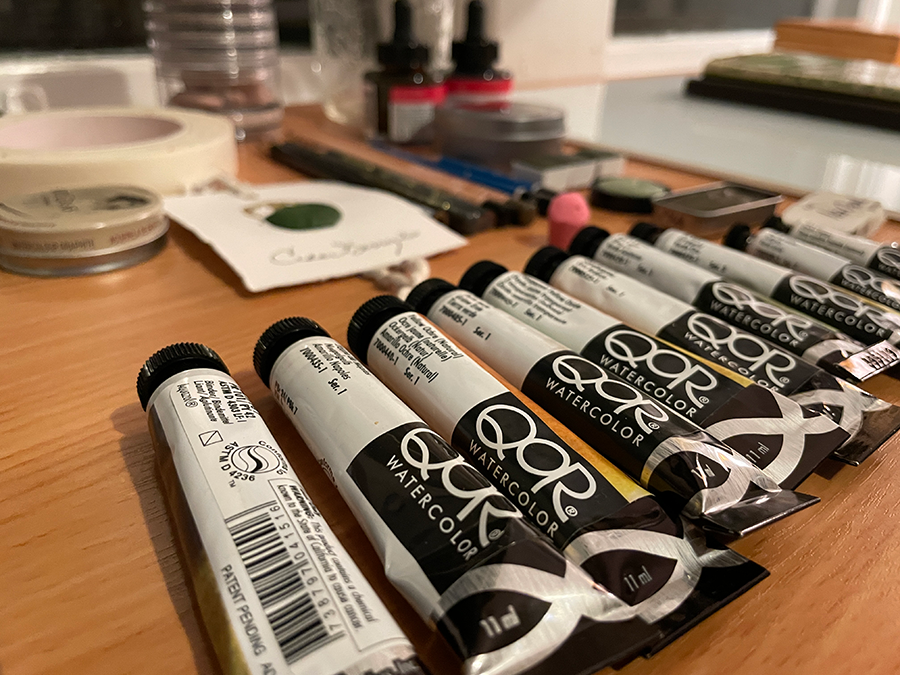
Clearing her workspace and setting it up for a single project is another way to not feel overwhelmed in knowing what to create and preparing to do so. To have total clarity when you show up to create, because there is only one obvious thing in front of you, and all of your needed tools are right there. (You can follow my wife on Instagram!) Here is a sampling of some of her projects:
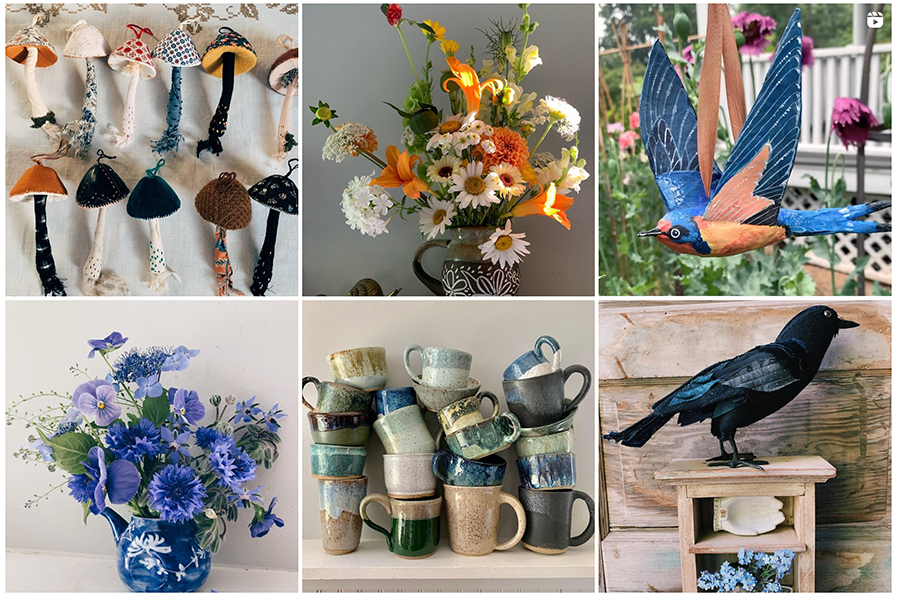
As a writer, I have done this by:
- Assigning a specific time and place for writing. For example: I would plan to write while at Starbucks at a certain time.
- I would clear my laptop desktop of all files, then add back in just one: the writing I wanted to work on.
- I would turn off internet when I started so that I couldn’t be distracted by email, social media, or an excuse to “do research” instead of actually write.
- I would bring headphones and have a specific playlist ready so that the music became another encouragement to focus.
When it comes to how you share your work and connect with others, a similar ethos applies. What if, instead of scrolling endlessly on social media, you opened it with an intention to create one meaningful interaction with someone you follow? What if you only followed those who inspired you, whittling down those you subscribe to or follow?
So often, people treat their social media the same way they treat their email inbox: it becomes their news source, their shopping source, their to-do list, how they stay connected with anyone they ever met, where they conduct business, where they find entertainment, and so much more.
For whatever channels you show up in to share your writing and creative work, what if you made them have a specific purpose? Where you only wanted to connect with those who inspire you, and where you can engage with readers.
Honor your boundaries
Okay, I saved the most important one for last: honor your boundaries. So this is a three step process:
- Have boundaries.
- Uphold your boundaries.
- Recognize and celebrate when you do so.
Boundaries are critical for a sense of personal safety, and for supporting mental health. But they can also help you decide a sense of overwhelm in how you create and share.
There are a million variations of this, but here are a couple just to illustrate the point for how you can connect with others through what you share:
- Celebrate one person each day on social media, and explain why they inspire you. Then close social media.
- Send one gratitude email each day. Email is such a powerful way to connect with others, especially one-on-one.
- Take people inside your creative process each day, and encourage them to share their own. There was a period where I wrote first thing each day, and took a photo of myself showing up to write and shared it on social media. I received so much feedback from others that this helped inspire them to create. This created more accountability for my own creative process, and gave me more opportunity to talk about what I write and why.
Are there ways that you have managed your process to feel less overwhelmed as you create and share? Let me know in the comments.
Thank you for being here with me.
-Dan
